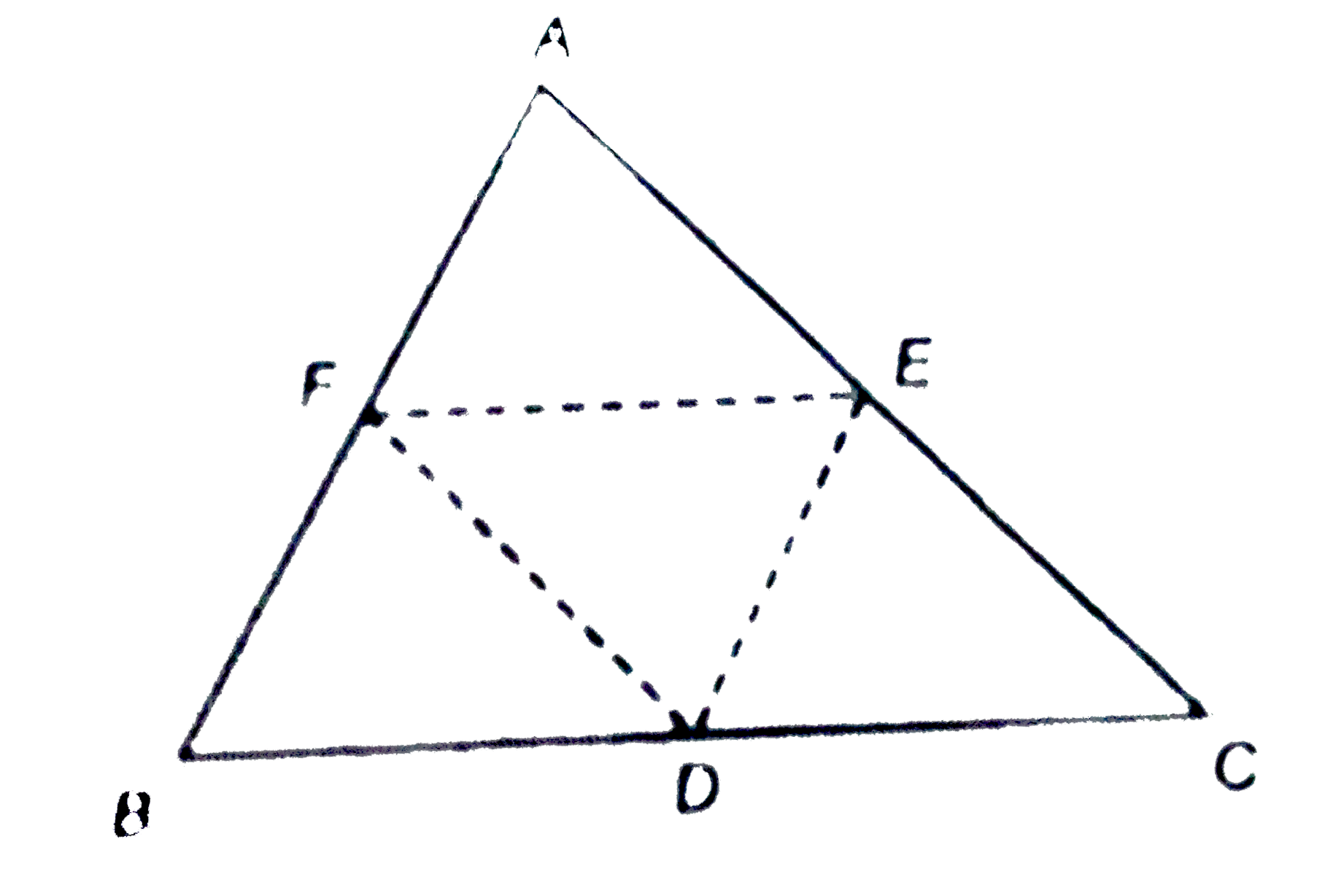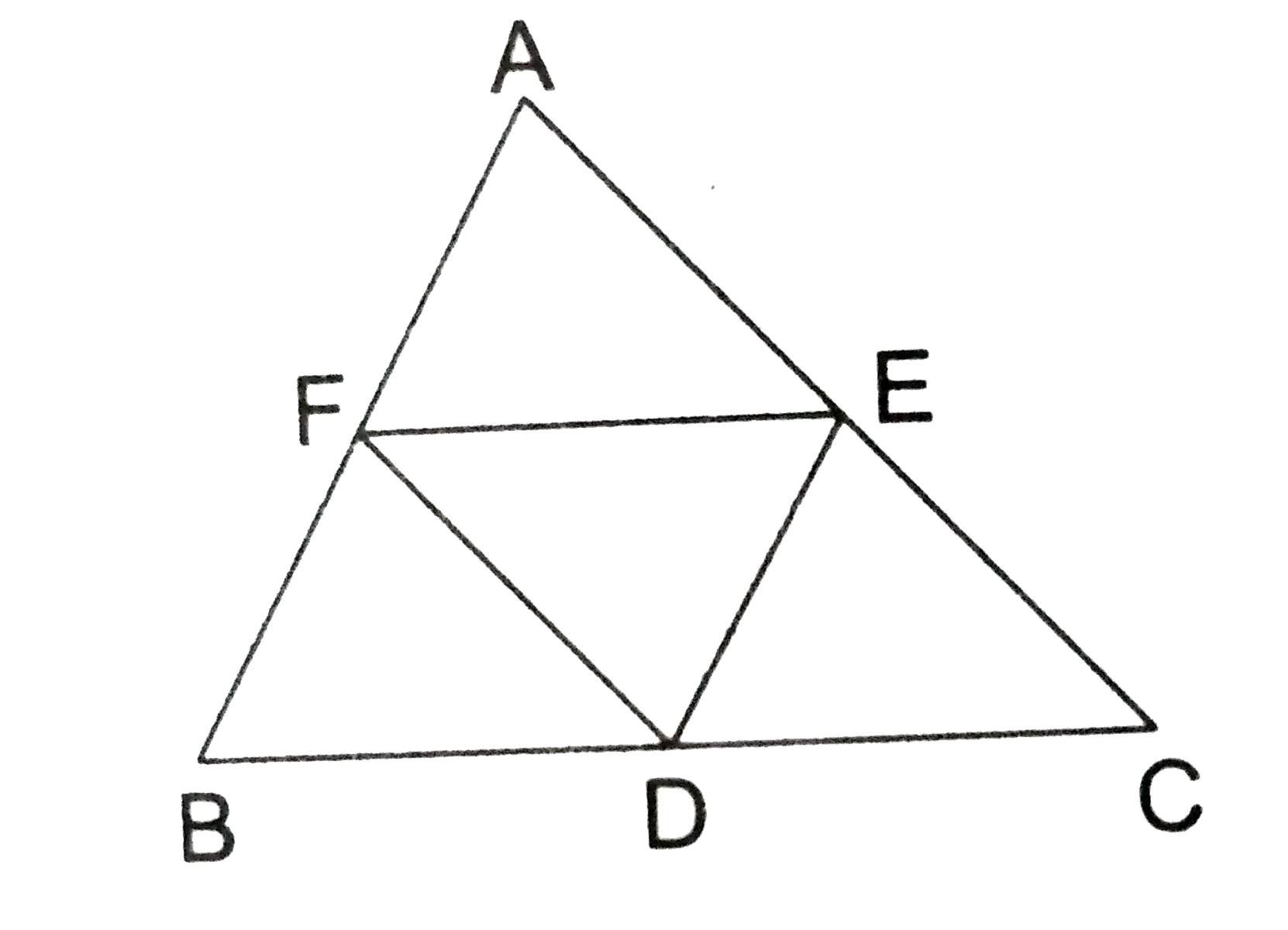In the adjoining figure D, E and F are the mid-points of the sides BC, CA and AB respectively of ΔABC. Prove that:
(i) □BDEF is a parallelogram
(ii) area of ΔDEF=14× area of ΔABC
(iii) area of □BDEF=12× area of ΔABC

(i) In ΔABC
Since, F is the mid-point of AB and E is the mid-point of AC
∴ FE∣∣BC⇒ FE∣∣BDSimilarly ED∣∣FB (mid - point theorem)
∴SquareBDEF is a parallelogram (∴ pairs of opposite sides are parallel)
(ii) Since, □BDEF is a parallelogram and FD is its diagonal
∴ area of ΔFBD= area of ΔDEF..(1)
Similarly, we can prove that
area of ΔCDE= area of ΔDEF...(2)
and area of ΔAFE= area of ΔDEF...(3)
∴4× area of ΔDEF= area of ΔDEF+ area of ΔDEF+ area of ΔDEF+ area of ΔDEF
= area of ΔDEF+ area of ΔAEF+ area of ΔFBD+ area of ΔCDE
= area of ΔABC
⇒ area of ΔDEF=14× area of ΔABC
(iii) Now, area of □BDEF=2× area of ΔABC
(∴ diagonal divides the parallelogram into two equal areas)
=2×14× area of ΔABC
=12× area of ΔABC
Topper's Solved these Questions
- AREA OF PARALLELOGRAMS AND TRIANGLESBook:NAGEEN PRAKASHANChapter:AREA OF PARALLELOGRAMS AND TRIANGLESExercise:Problems From NCERT/exemplar
Explore 12 Videos
- AREA OF PARALLELOGRAMS AND TRIANGLESBook:NAGEEN PRAKASHANChapter:AREA OF PARALLELOGRAMS AND TRIANGLESExercise:Exercise
Explore 34 Videos
- CIRCLE Book:NAGEEN PRAKASHANChapter:CIRCLE Exercise:Revision Exercise (long Answer Questions )
Explore 5 Videos
Similar Questions
Knowledge Check
In a ΔABC,D,E,F are the mid -points of the sides BC, CA and AB respectively, the vector AD is equal to
A−−→BE+−−→CFB−−→BE−−−→CFC−−→CF−−−→BED−−−→BE−−−→CFIn a triangle ABC, D, E, F are the mid-points of the sides BC, CA and AB respectively , the vector →AD is equal to
A→BE+→CFB→BE−→CFC→CF−→BED−→BE−→CFIf D, E and F are the mid points of BC, CA and AB respectively of the △ABC then the ratio of aria parallelogram DEFB and area of the trapezium CAFD is ,
A2:3B3:4C1:2D1:3
D, E and F are the mid-points of the sides BC, CA and AB, respectively of and equilateral ΔABC. Show that ΔDEF is also an equilateral triangle.
View SolutionD, E and F are respectively the mid -points of the sides BC, CA and AB of a △ABC .Show that (i) BDEF is a parallelogram
View SolutionIn the adjoning figure, D and E are the points on the sides AB and AC respectively of ΔABC and area of ΔBCE= area of ΔBCD.
Prove that DE∣∣BC

View SolutionD, E, F are the midpoints of the sides BC, CA and AB respectively of △ABC. Prove that
(i) BDEF is a ||gm,
(ii) ar(△DEF)=14ar(△ABC)and
(iii) ar(||gm BDEF)=12ar(△ABC)

View SolutionIf D, E and F are the mid-points of sides BC, CA and AB respectively of △ABC, then the ratio of the areas of △DEF to the area of △ABC is :
View Solution
